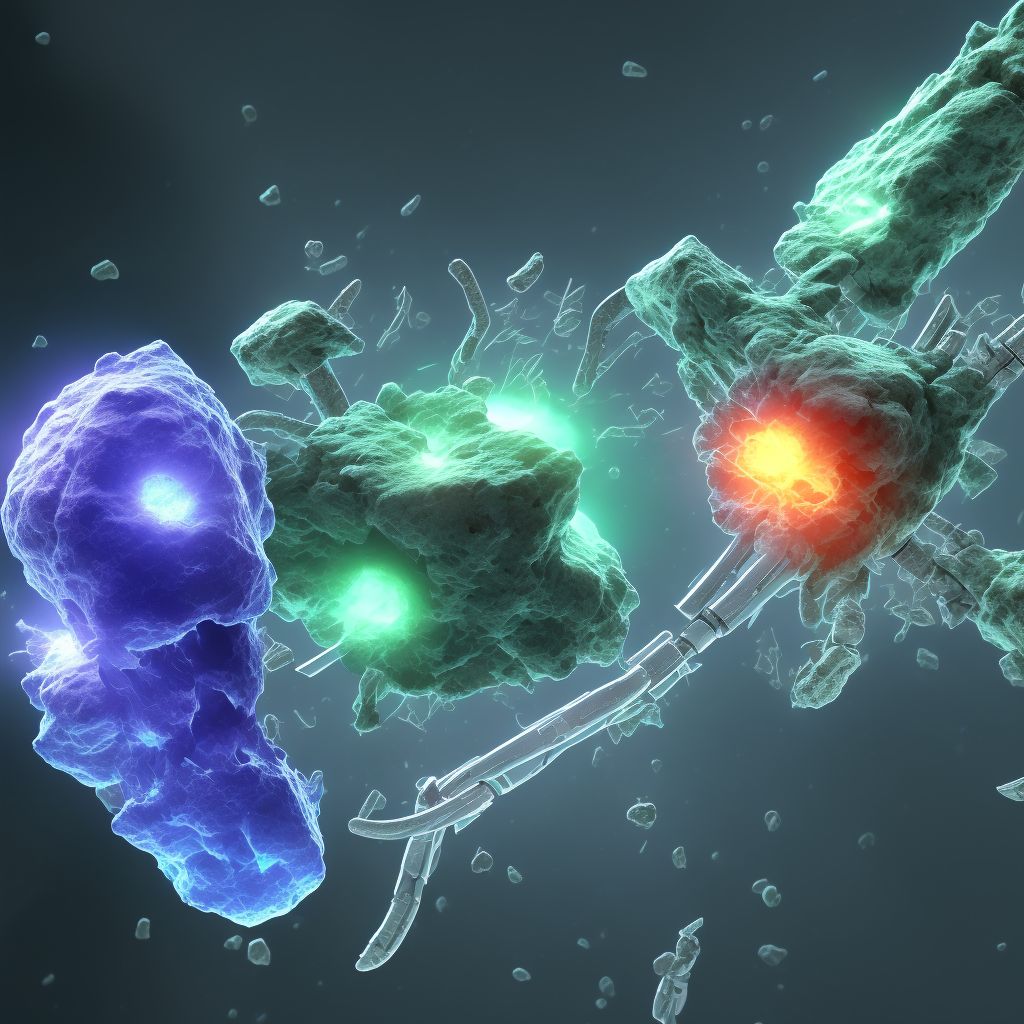
Displaced transverse fracture of shaft of right tibia, subsequent encounter for open fracture type IIIA, IIIB, or IIIC with nonunion Save
ICD-10 code: S82.221N
Disease category: S82.221: Displaced transverse fracture of shaft of right tibia
Displaced Transverse Fracture of Shaft of Right Tibia: Causes and Types
A displaced transverse fracture of the shaft of the right tibia is a severe injury that requires immediate medical attention. This type of fracture occurs when the tibia bone in the lower leg breaks completely across its width, resulting in a separation of the bone fragments. Subsequent encounters for open fracture type IIIA, IIIB, or IIIC with nonunion can further complicate the healing process.
There are several potential causes for a displaced transverse fracture of the shaft of the right tibia. High-impact trauma, such as a car accident or a fall from a significant height, can exert enough force on the bone to cause it to break. Sports-related injuries, especially in contact sports like football or rugby, can also lead to this type of fracture.
Open fractures, also known as compound fractures, occur when the broken bone pierces through the skin, increasing the risk of infection. Subsequent encounters for open fracture type IIIA, IIIB, or IIIC with nonunion indicate the persistence of the fracture and the presence of complications in the healing process.
There are three types of open fractures, each with varying degrees of severity. In type IIIA fractures, the wound is less than 1 cm in size, with minimal soft tissue damage. Type IIIB fractures involve extensive soft tissue damage, including muscle and skin, but do not require a flap or graft to cover the wound. Type IIIC fractures are the most severe, involving damage to major blood vessels and requiring vascular repair.
- Displaced transverse fracture of shaft of right tibia
- Open fracture type IIIA
- Open fracture type IIIB
- Open fracture type IIIC
- Nonunion
It is crucial to seek immediate medical attention for a displaced transverse fracture of the shaft of the right tibia. Proper diagnosis and treatment can help prevent complications and ensure effective healing. Consult a healthcare professional for an accurate assessment and appropriate management of this injury.
Note: This article provides general information and does not cover treatment options. Always consult with a healthcare professional for personalized advice.
Treatment of Displaced transverse fracture of shaft of right tibia, subsequent encounter for open fracture type IIIA, IIIB, or IIIC with nonunion:
Treatment Options for Displaced Transverse Fracture of Shaft of Right Tibia with Nonunion
A displaced transverse fracture of the shaft of the right tibia is a complex injury that can result in nonunion if not properly treated. Nonunion refers to the failure of the fractured bones to heal together. In cases where the fracture has not healed, subsequent encounters are required to add...
To see full information about treatment please Sign up or Log in